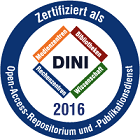Gan, Xinyu: Nutrient remediation from wastewater by Algal Turf Scrubber (ATS) and evaluation of ATS biomass as fertilizer. - Bonn, 2024. - Dissertation, Rheinische Friedrich-Wilhelms-Universität Bonn.
Online-Ausgabe in bonndoc: https://nbn-resolving.org/urn:nbn:de:hbz:5-79385
Online-Ausgabe in bonndoc: https://nbn-resolving.org/urn:nbn:de:hbz:5-79385
@phdthesis{handle:20.500.11811/12474,
urn: https://nbn-resolving.org/urn:nbn:de:hbz:5-79385,
author = {{Xinyu Gan}},
title = {Nutrient remediation from wastewater by Algal Turf Scrubber (ATS) and evaluation of ATS biomass as fertilizer},
school = {Rheinische Friedrich-Wilhelms-Universität Bonn},
year = 2024,
month = oct,
note = {The increasing discharge of nutrient-rich wastewater into natural water bodies poses a severe environmental challenge, demanding innovative and cost-effective solutions for efficient nutrient removal and recovery. This study first aims to validate the hypothesis that the Algal Turf Scrubber (ATS) system, an advanced algal biofilm reactor, can effectively remove and recover nutrients from wastewater under diverse environmental conditions. Rigorous evaluations were conducted, including laboratory-scale tests varying total inorganic carbon, nitrogen-to-phosphorous (N:P) ratio, and light intensity (Chapter 3), and continuous operation of technical-scale ATS systems in a greenhouse, analyzing their nutrient removal and recovery under different temperature and light conditions (Chapter 4). Mathematical modeling elucidated the system's responses. The findings reveal that the ATS system exhibits rapid and effective removal of phosphorus and nitrogen from wastewaters while simultaneously generating nutrient-rich biomass. Furthermore, the ATS system demonstrates robust performance across a wide range of temperature and light intensity conditions. Notably, the ATS system offers a cost advantage, with the biomass production cost being only 18% of that associated with conventional tubular photobioreactors. Overall, the results demonstrate the cost-effectiveness and versatility of ATS system as a technology for efficient nutrient removal and recovery from wastewaters, making it suitable for various regions.
To test the hypothesis that the ATS system provides a viable pathway for recovering nutrients from wastewater and ultimately promote plant growth, we used biomass harvested from the ATS system as an organic phosphorus fertilizer in subsequent greenhouse pot experiments to evaluate its effectiveness on plant performance and phosphorus uptake by wheat (Chapter 5). The results indicate that phosphorus derived from algal biofilms is as accessible in similar rate as from mineral fertilizer, highlighting the potential of algal biofilms as organic nutrient sources for wheat cultivation.
In summary, ATS systems emerge as potent tools for achieving efficient nutrient removal and recovery in various environments. In addition, the harvested biomass holds promise as a robust organic fertilizer, thus reinforcing advocacy for sustainable agricultural practices and marking a significant advance in environmentally friendly wastewater management practices.},
url = {https://hdl.handle.net/20.500.11811/12474}
}
urn: https://nbn-resolving.org/urn:nbn:de:hbz:5-79385,
author = {{Xinyu Gan}},
title = {Nutrient remediation from wastewater by Algal Turf Scrubber (ATS) and evaluation of ATS biomass as fertilizer},
school = {Rheinische Friedrich-Wilhelms-Universität Bonn},
year = 2024,
month = oct,
note = {The increasing discharge of nutrient-rich wastewater into natural water bodies poses a severe environmental challenge, demanding innovative and cost-effective solutions for efficient nutrient removal and recovery. This study first aims to validate the hypothesis that the Algal Turf Scrubber (ATS) system, an advanced algal biofilm reactor, can effectively remove and recover nutrients from wastewater under diverse environmental conditions. Rigorous evaluations were conducted, including laboratory-scale tests varying total inorganic carbon, nitrogen-to-phosphorous (N:P) ratio, and light intensity (Chapter 3), and continuous operation of technical-scale ATS systems in a greenhouse, analyzing their nutrient removal and recovery under different temperature and light conditions (Chapter 4). Mathematical modeling elucidated the system's responses. The findings reveal that the ATS system exhibits rapid and effective removal of phosphorus and nitrogen from wastewaters while simultaneously generating nutrient-rich biomass. Furthermore, the ATS system demonstrates robust performance across a wide range of temperature and light intensity conditions. Notably, the ATS system offers a cost advantage, with the biomass production cost being only 18% of that associated with conventional tubular photobioreactors. Overall, the results demonstrate the cost-effectiveness and versatility of ATS system as a technology for efficient nutrient removal and recovery from wastewaters, making it suitable for various regions.
To test the hypothesis that the ATS system provides a viable pathway for recovering nutrients from wastewater and ultimately promote plant growth, we used biomass harvested from the ATS system as an organic phosphorus fertilizer in subsequent greenhouse pot experiments to evaluate its effectiveness on plant performance and phosphorus uptake by wheat (Chapter 5). The results indicate that phosphorus derived from algal biofilms is as accessible in similar rate as from mineral fertilizer, highlighting the potential of algal biofilms as organic nutrient sources for wheat cultivation.
In summary, ATS systems emerge as potent tools for achieving efficient nutrient removal and recovery in various environments. In addition, the harvested biomass holds promise as a robust organic fertilizer, thus reinforcing advocacy for sustainable agricultural practices and marking a significant advance in environmentally friendly wastewater management practices.},
url = {https://hdl.handle.net/20.500.11811/12474}
}






